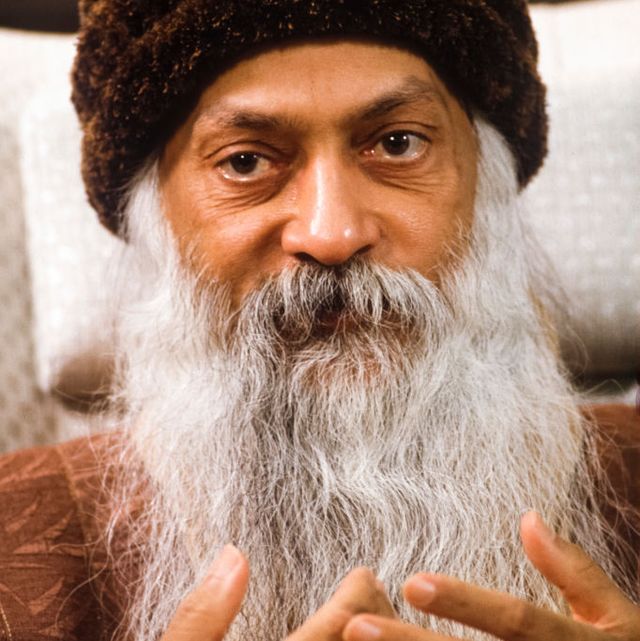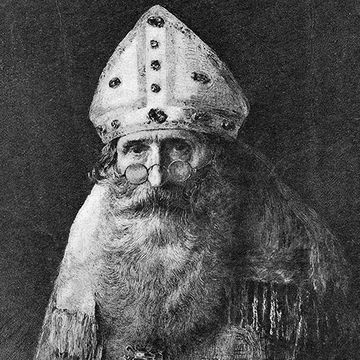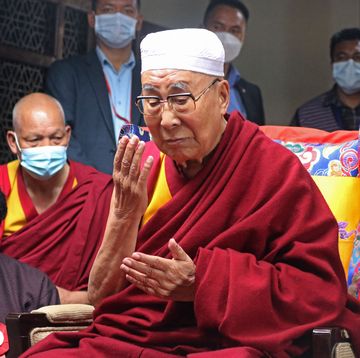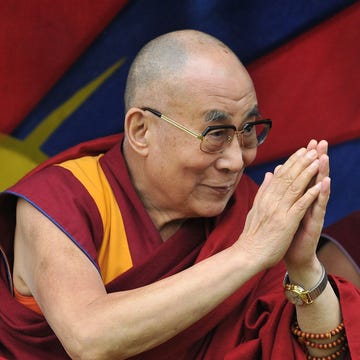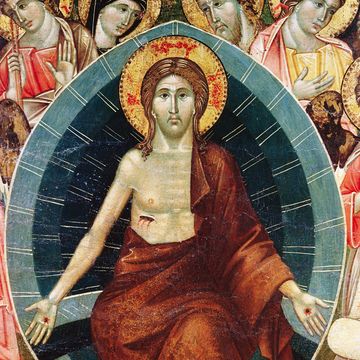1931–1990
Who Was Bhagwan Shree Rajneesh?
After graduating from college and claiming to have found enlightenment, in 1970, Bhagwan Shree Rajneesh introduced the practice of "dynamic meditation" and became a spiritual teacher and began to attract a significant following. When his controversial teachings put him repeatedly in conflict with Indian authorities, Rajneesh and his followers fled to a ranch in Oregon, where they attempted to establish a commune. However, conflicts with the local community there resulted in Rajneesh and members of his group turning to crime to achieve their ends, and in 1985, Rajneesh was arrested for immigration fraud. After pleading guilty, he was deported to India. He died on January 19, 1990, in Pune, India.
FULL NAME: Bhagwan Shree Rajneesh
BORN: December 11, 1931
DEATH: January 19, 1990
BIRTHPLACE: Madhya Pradesh
Early Life
Bhagwan Shree Rajneesh (né Chandra Mohan Jain) was born on December 11, 1931, in Kuchwada, India. He lived with his grandparents during his early youth and then with his parents and was an intelligent but rebellious child. In 1951, Rajneesh graduated from high school and started attending Hitkarini College in Jabalpur but was forced to transfer to D.N. Jain College after his disruptive behavior put him at odds with one of his professors. In 1953, after taking a year off from his studies to soul search and meditate, Rajneesh claimed that he had achieved enlightenment. He returned to school, however, and after graduating with a bachelor's degree in philosophy, he went on to pursue a master's in philosophy at Sagar University. Following his graduation in 1957, Rajneesh accepted a position as an assistant professor of philosophy at Raipur Sanskrit College, but his radical ideas soon put him at odds with the institution's administration and he was forced to find work elsewhere, eventually becoming a professor at the University of Jabalpur.
Spiritual Leadership
Concurrent with his teaching at the University of Jabalpur, Rajneesh traveled throughout India, spreading his unconventional and controversial ideas about spirituality. Among his teachings was the notion that sex was the first step toward achieving "superconsciousness." By 1964, he started conducting meditation camps and recruiting followers, and two years later he resigned from his professorship to focus more fully on spreading his spiritual teachings. In the process, he became something of a pariah and earned himself the nickname "the sex guru."
In 1970, Rajneesh introduced the practice of "dynamic meditation," which, he asserted, enables people to experience divinity. The prospect enticed young Westerners to come reside at his ashram in Pune, India, and become Rajneesh's devout disciples, called sannyasins. In their quest for spiritual enlightenment, Rajneesh's followers took new Indian names, dressed in orange and red clothes, and participated in group sessions that sometimes involved both violence and sexual promiscuity. By the late 1970s, the six-acre ashram was so overcrowded that Rajneesh sought a new site to relocate to. However, his movement had become so controversial that the local government threw up various roadblocks to make things difficult for him. Tensions came to a head in 1980, when a Hindu fundamentalist attempted to assassinate Rajneesh.
Facing ongoing pressure from government authorities and traditional religious groups, in 1981 Rajneesh fled to the United States with 2,000 of his disciples, settling on a 100-square-mile ranch in central Oregon, which he named Rancho Rajneesh. There, Rajneesh and the sannyasins started building their own city, called Rajneeshpuram. Disapproving neighbors contacted local officials in an attempt to close down Rajneeshpuram, asserting that it violated Oregon's land-use laws, but Rajneesh was victorious in court and continued to expand the commune.
Crimes and Arrest
As tensions between the commune and the local government community increased, Rajneesh and his followers soon turned to more drastic measures to achieve their ends. including murder, wiretapping, voter fraud, arson and a mass salmonella poisoning in 1984 that affected more than 700 people. After several of his commune leaders fled to avoid prosecution for their crimes, in 1985, police arrested Rajneesh, who was himself attempting to flee the United States to escape charges of immigration fraud. During his subsequent trial, Rajneesh pleaded guilty of immigration charges, realizing that a plea bargain was the only way he'd be allowed to return to India.
Later Life and Legacy
After pleading guilty, Rajneesh returned to India, where he found the number of his followers had significantly decreased. In the coming months, he searched unsuccessfully for a place to reestablish his ashram. He was denied entry into numerous countries before returning again to India in 1986.
During the next few years, he continued to teach and renamed himself Osho, but his health began to decline. On January 19, 1990, he died of heart failure at one of his few remaining communes in Pune, India. Following his death, the commune was renamed the Osho Institute, and then later the Osho International Meditation Resort, which is currently estimated to attract as many as 200,000 visitors a year. Osho's followers also continue to spread his beliefs from one of the hundreds of Osho Meditation Centers that they have opened in major cities across the globe.
Quotes
“I am here to seduce you into a love of life; to help you to become a little more poetic; to help you die to the mundane and to the ordinary so that the extraordinary explodes in your life.”—Bhagwan Shree Rajneesh
Fact Check: We strive for accuracy and fairness. If you see something that doesn't look right, contact us!
The Biography.com staff is a team of people-obsessed and news-hungry editors with decades of collective experience. We have worked as daily newspaper reporters, major national magazine editors, and as editors-in-chief of regional media publications. Among our ranks are book authors and award-winning journalists. Our staff also works with freelance writers, researchers, and other contributors to produce the smart, compelling profiles and articles you see on our site. To meet the team, visit our About Us page: https://www.biography.com/about/a43602329/about-us
